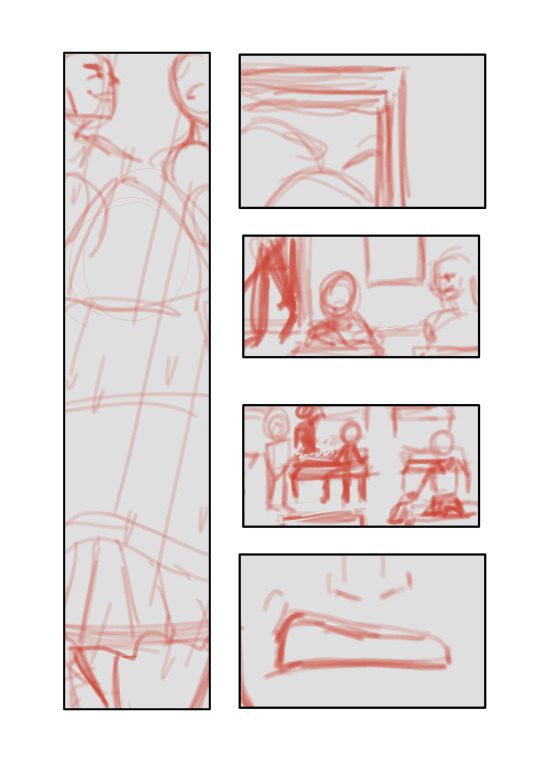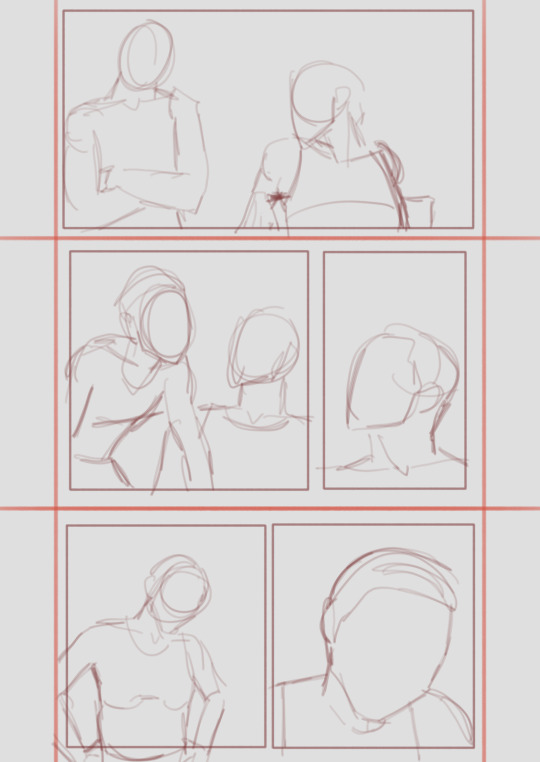#Mahika Corpus
Explore tagged Tumblr posts
Text
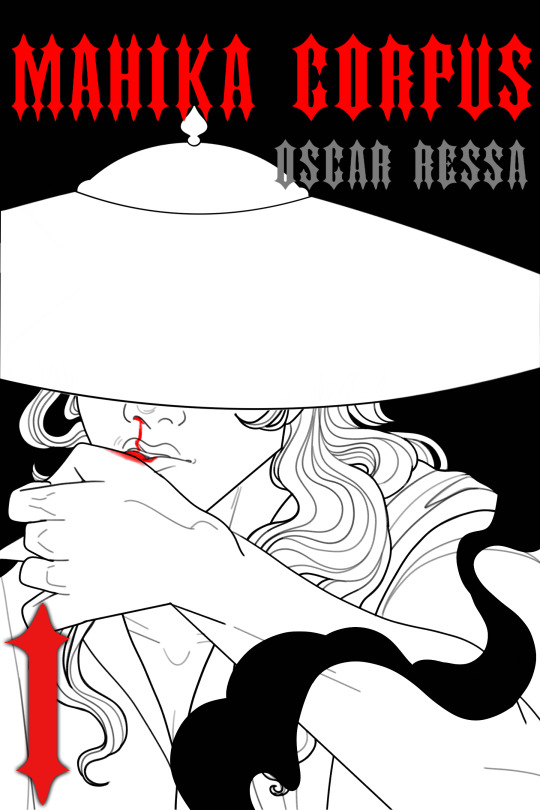
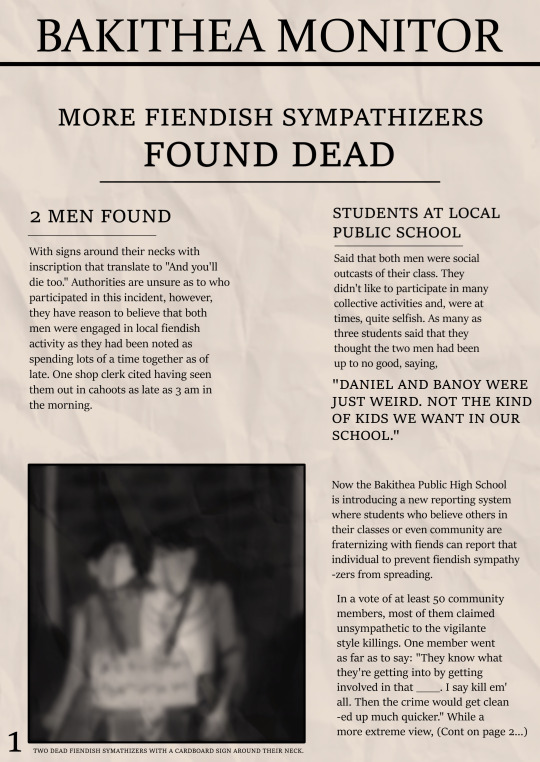
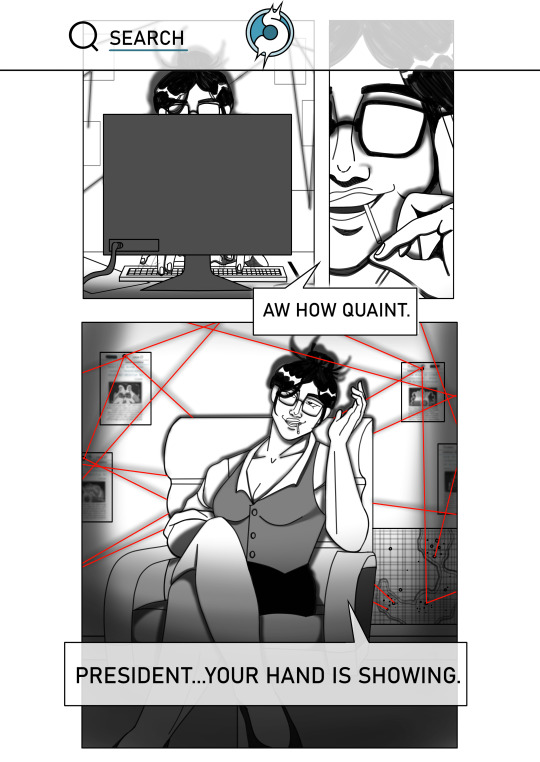
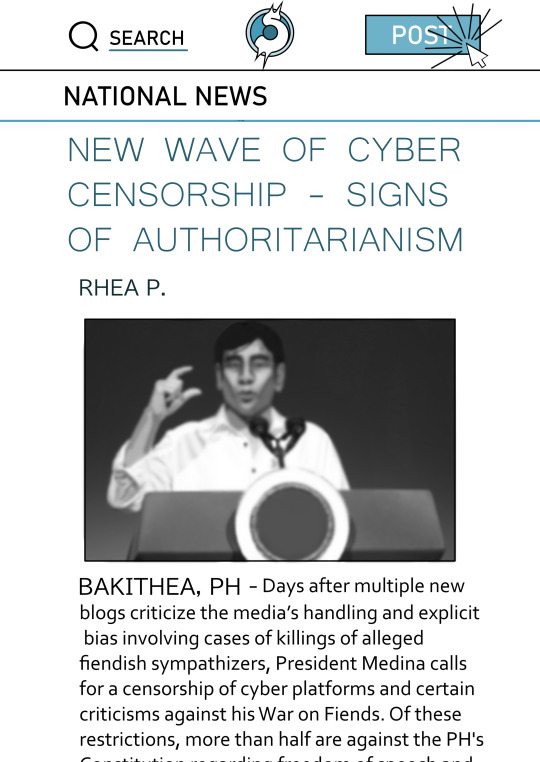
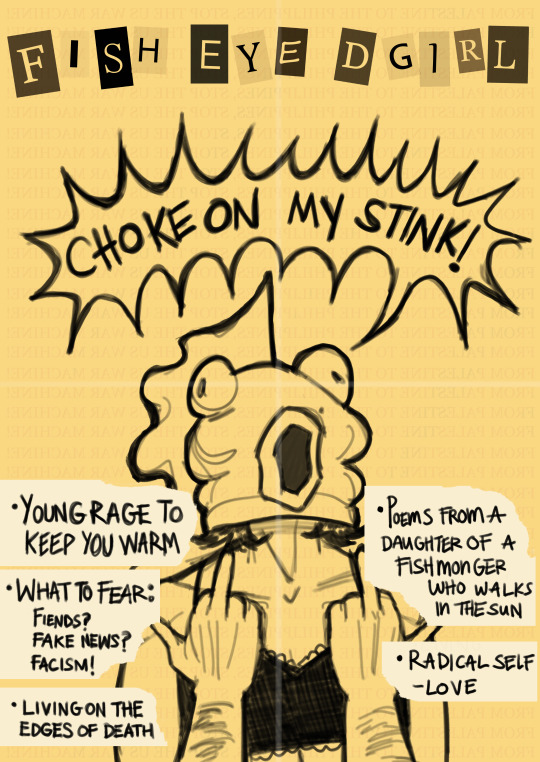

[Title Card] [Page 1] [Page 15] [Page 17] [Page 18] [Page 24]
3 notes
·
View notes
Text
Thumbnails
NEWSPAPER

[Page 1] News Paper Article

[Page 2] Article is stepped on.

[Page 3] Students are talking and milling. One student, Sakita, is annoyed.
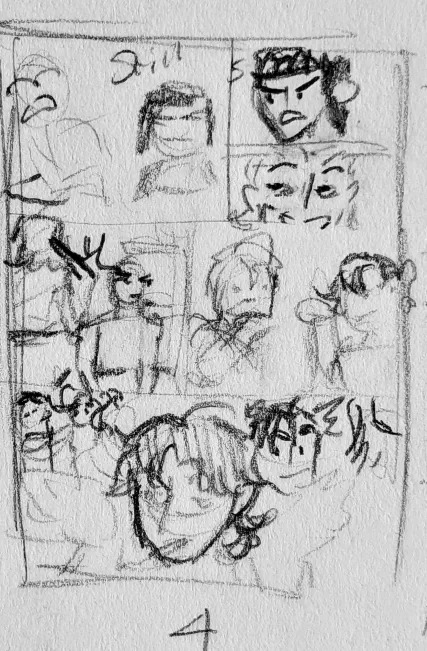
[Page 4]
Sakita, sitting in the front of the class: Tch, still not here. Anya: For @#$%’s sake, I don’t want to hear Mr. Newman’s lecture again. Sakita: Don’t curse, I’ll get you written up. Anya: Class hasn’t started yet, Sakita.
--
Elija: I heard that they didn’t find the bodies til this morning. Their families didn’t even know about…ya know. Makisig: How do you not know someone is meeting up with fiends every night? I mean, c’mon. It’s not hard to tell when someone is being sketchy.

[Page 5]
Frankie: Folks from a slum like that probably don’t even know how many kids they have, let alone who's doing what. Makisig, rolls his eyes and turns away from Frankie. Frankie: I’m serious. I read in the paper the other day the percentages of fiendish converts that are able to hide in the slums. It said nearly 25% of its population. Harmony: [Gasp.] How awful. Frankie: I know. If you ask me they should clear out those kinds of neighborhoods. They give this place a bad name. Harmony, light-hearted: Frankie, you shouldn’t say things like that. Cherry: Yeah Frankie, maybe you oughta shut up.

[Page 6]
Frankie: Woah, looks likes someone’s got her panties in a twist. Cherry: Nope, just hate to hear someone wasting air. Frankie: You know Cherry, I’m starting to think you have a crush on me with how obsessed you get with me everytime I talk. Cherry, laughs: Oh, is that what you tell yourself when you’re met with disgust from girls? I mean, I know that’s like every interaction you have, but wow. There’s coping and then there’s delusional.
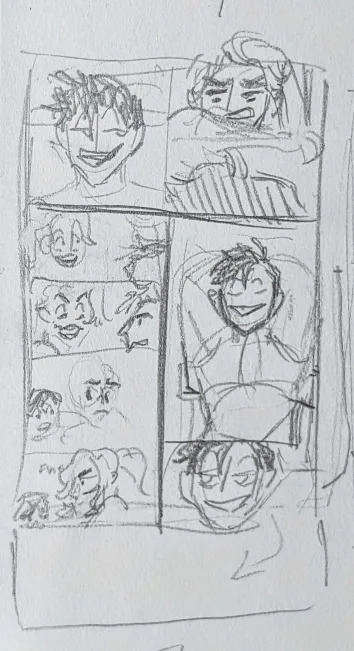
[Page 7]
Frankie: Wow, sad attempt at humor. But hey, shouldn’t be the only kind of failure you should get used to. Osvaldo: Dude. Cherry: No, no. Let him speak, it just makes me wanna hit him more. Fabiola: Cherry, c’mon he’s not worth it. Frankie: Yeah Cherry, move along. I bet the whole reason you’re mad anyway is cause you’re from those same slums, huh? Was I hitting a little too close to home?

[Page 8]
Cherry laughs. “You’re right, Fabiola. He’s not worth it.” Hits him. “Doesn’t mean he doesn’t deserve it.”
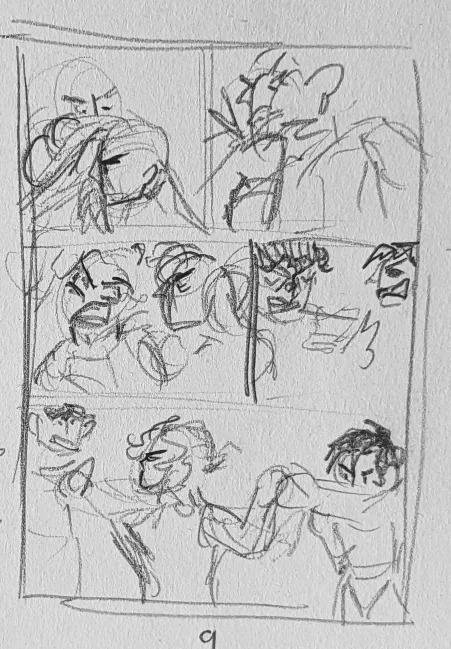
[Page 9]
Fighting ensues between Cherry and Frankie. Ramil tries to push Frankie off of her, but she pulls his out of the way.
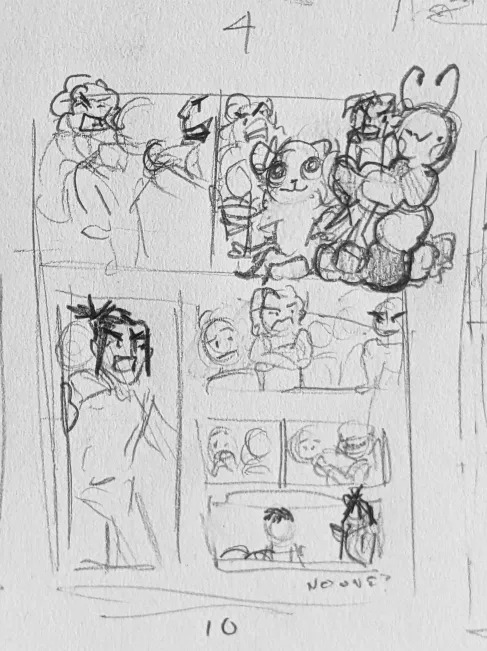
[Page 10]
Joseph (a teacher for a different homeroom) gets there and has to break it up with his favor (magical gift. His allows him to control puppets!): “What happened?” No one talks, Harmony goes to speak up and Osvaldo stops her and shakes his head. Joseph: “No one?”…

[Page 11]
Joseph: “Fine. Cherry and Frankie, go to the principal's office... Go now."
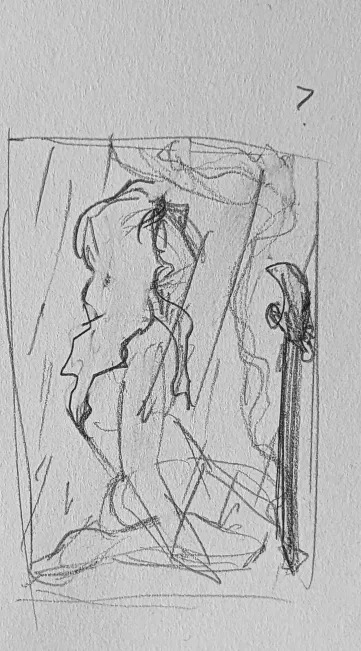
[Page 12]
Text over Diwa in the rain with a smoking sword with Jospeh's dialogue over it: "Diwa will decide the consequences of both of your actions when they’re back.”
ONLINE NEWS BLOG
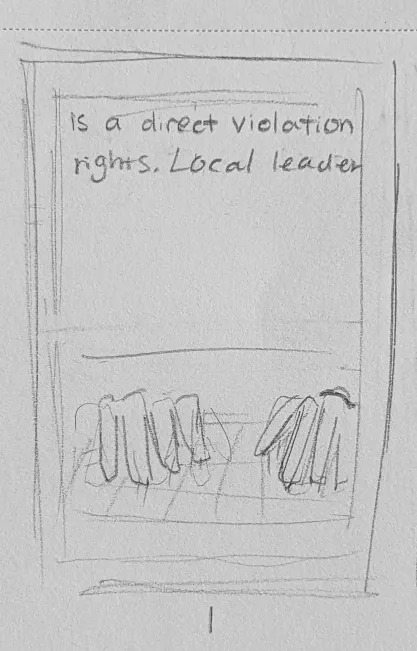
[Page 13] A screen with words. Hands typing on a keyboard.
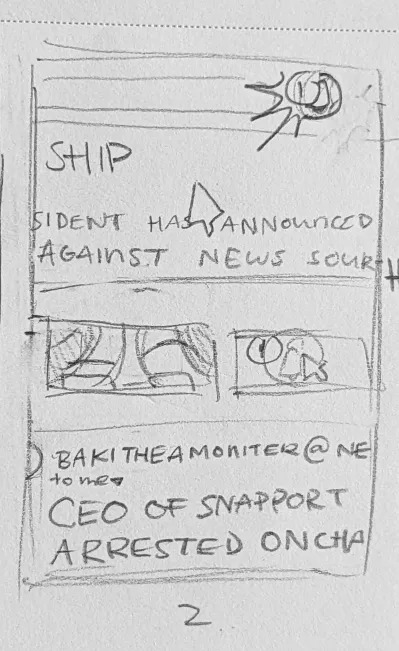
[Page 14] Character, Princess, gets an email about the CEO of her work being arrested on charges of libel.
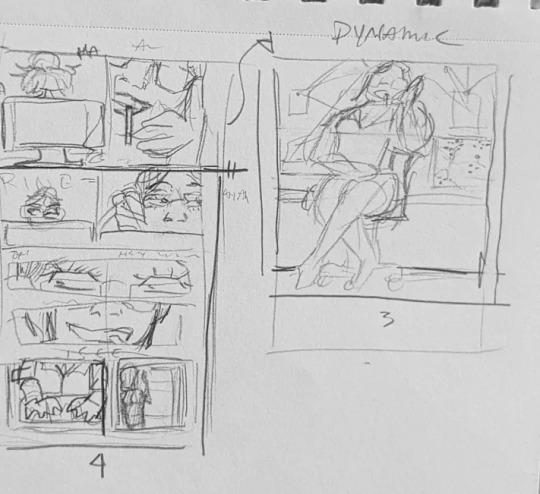
[Page 15 & 16]
Princess laughs: “Aw, how quaint.” Princess: “President, your hand is showing.”
----
She gets a call, Princess: “Amanda I saw the article—”
Princess: “Oh. Hey, it’s been a minute. How’s the dog hunt going?”
Princess: “I see.”
Princess: “I’ll try to fit it into my schedule.”
Diwa: “Thank you, Princess. I really appreciate it.”
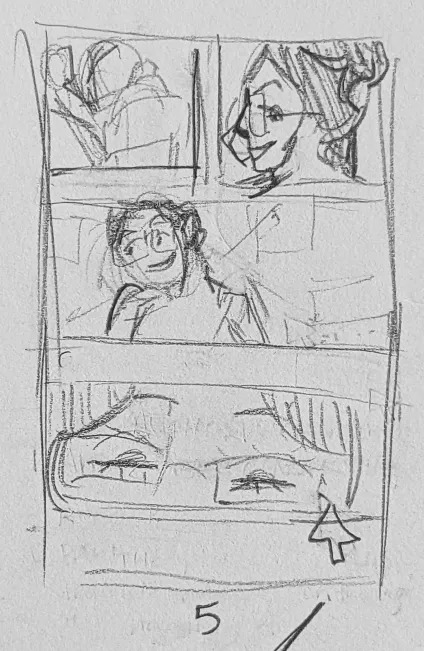
[Page 17]
Princess: “Of course, what else are best friends for?”
Princess: “Talk to you later, bye.”

[Page 18]
Snapport Blog Post: New Wave of Cyber Censorship -- Signs of Authoritarianism
ZINE
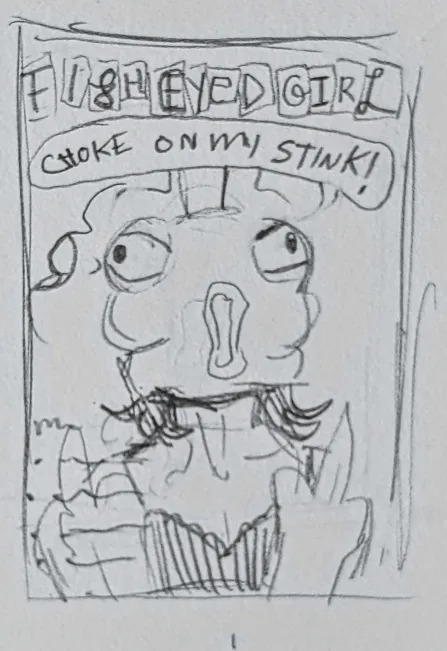
[Page 19] Picture of a girl with a fish head and two middle fingers.
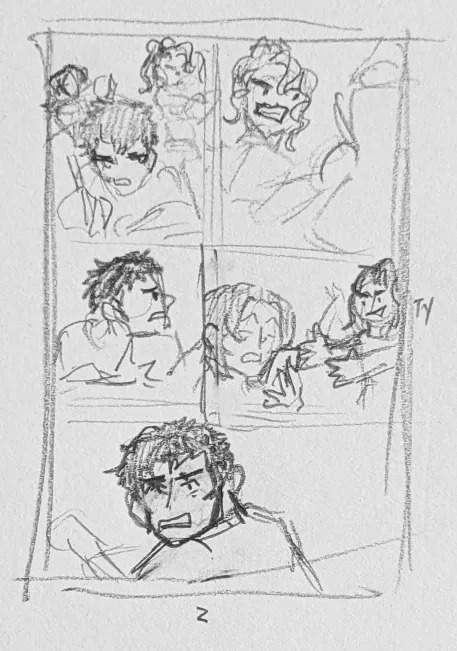
[Page 20]
Dagati: “You know you were being stupid right?” Cherry: “Well, I wasn’t gonna let him run his mouth like that.” Dagati: “Cherry, you could get in serious trouble.” Ciro: “I think we’re forgetting he had it coming.” Dagati: “I’m serious guys! You hit him. You could get expelled. You know how the school is with their ‘violence’ policy.”

[Page 21]
Ciro: “His words are violent. I doubt if Diwa heard him, they would’ve let it slide.” Pause, distance. Cherry: “I didn’t even use my favor…c’mon Dagati, I’ll be fine.” … Cherry, sighs. Sits down and taps on her paper: “Can you not ignore me?”
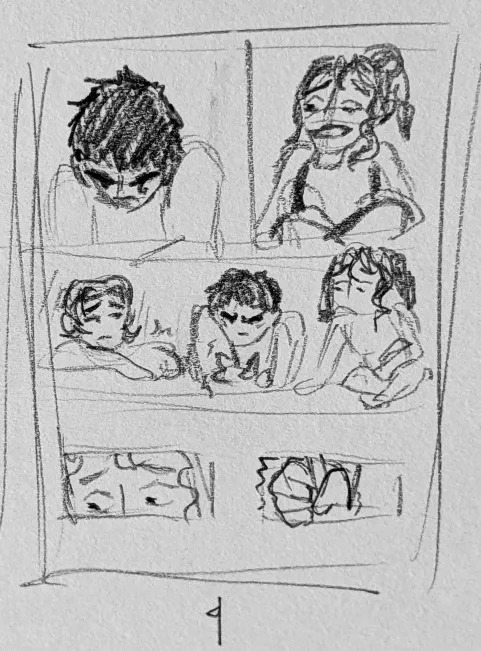
[Page 22]
Dagati: “I’m not.” Cherry: “It feels like it.” Another pause. Ciro comes to sit beside her and bump her shoulder. Ciro: “Gati, what is it?”
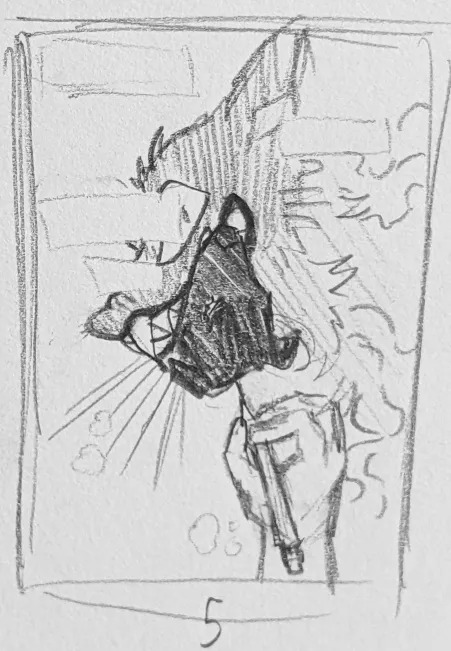
[Page 23]
Dagati: “I knew them.” Ciro: “Who?” Dagati: “The boys in the paper…I—”
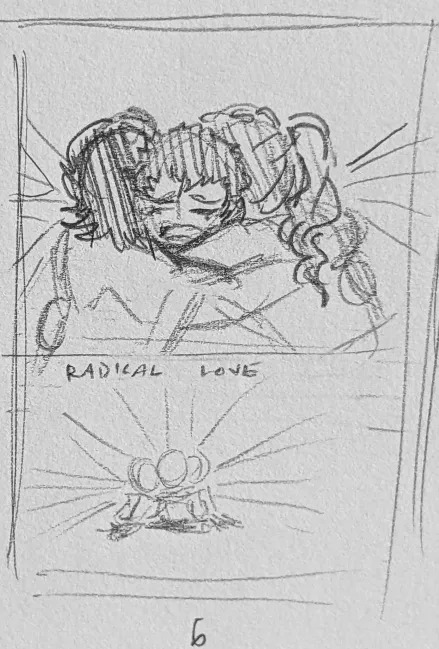
0 notes
Text
My Process
At first, I had a completely different set-up for how I wanted this story to go. I realized this is because I wanted to create an interesting world, instead of an interesting story. All the elements of the story I wanted to talk about when it came to US Imperialism were in the base of the world-building, instead of the story. With this plotline that I worked on for two months and I loved...I had to scrap nearly all of it. Funnily enough, the part that I kept around was a section that was circled, vague, and question-marked. That piece became the heart of the current komik.
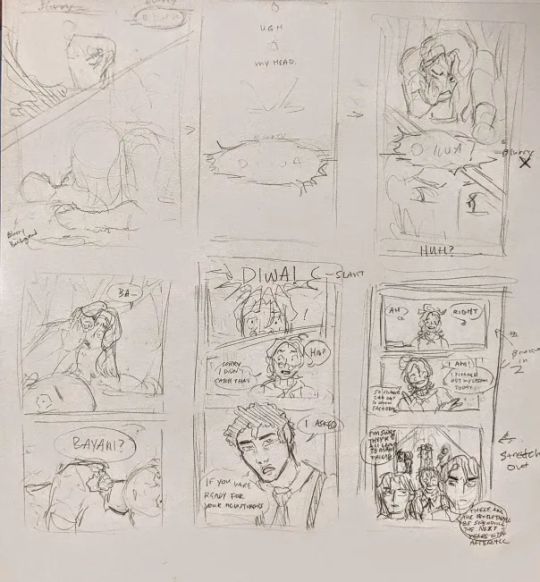
I realized after my first flop, that I wanted to do more research into the things that I wanted to say. So I did historical research and read a lot of different articles and watched a few documentaries, while also teaching myself about the komik/manga/comic field and its own history. One of the komiks that I came across that got continuous praise and was a bit difficult to get a hold of was The Mythological Class by Arnold Arre. I was lucky enough to get it on loan from the library and actually holding the materials in my hands was a magical experience. I took a lot of inspiration in my blog panels from his simplistic black and white yet intricate style.
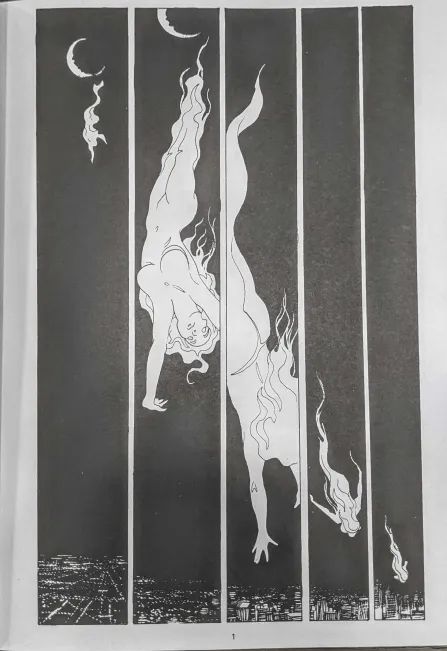
After being invigorated by this Filipino illustrator who told the kind of stories that I was interested in, and being advised by multiple people to shrink down what I wanted to do or be okay with leaving it unfinished, I went into my second draft. Instead of drafting up a whole first komik chapter with a timeline for a potential series. I distilled the story down into three main sections that had no more than 12 pages each. I really focused in on applying the research into the format while writing it into the heart of the story. The central conflict stems from the bigger conversation that I'm interested in exploring. A piece of that conversation unfolds and follows the characters until the end, pulling together people from everywhere, regardless of class, ethnicity, gender, or occupation.
I think even though I scrapped my original story, it was a really help process for getting me to understand each of my characters in a very nuanced way. Many of the characters are teenagers who don't have everything figured out. They make mistakes, have internal biases, as well as love their friends, and want to support each other.
After thumbnailing the entire komik, I jumped straight into sketching them digitally to get a true idea of how I wanted to format everything.
I quickly ran into the reality that time was running out and that sketching 24 pages, that then needed to be lined, and then colored was not going to happen. So, I picked the most important scenes that felt to me to get across a certain tone that I had been trying to cultivate with the story. Then after weeks of work, I finally had things to show for it!
All that was left for me to do was put it all together and make my posts!
0 notes
Text

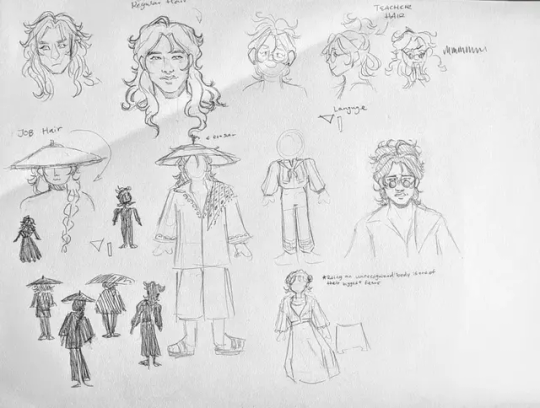
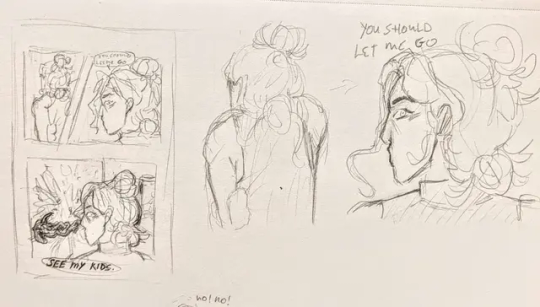

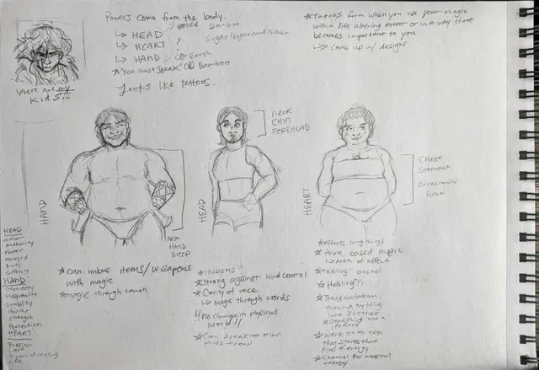

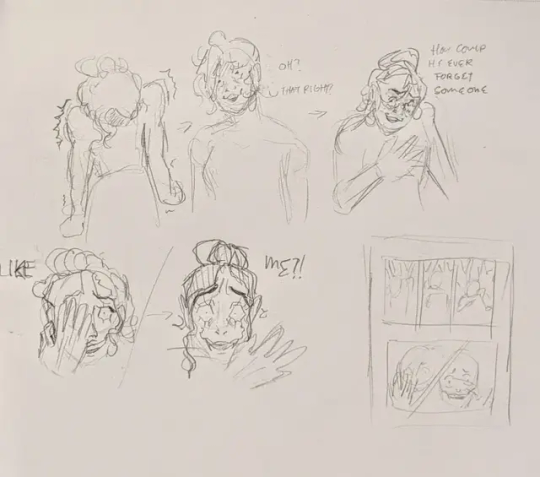
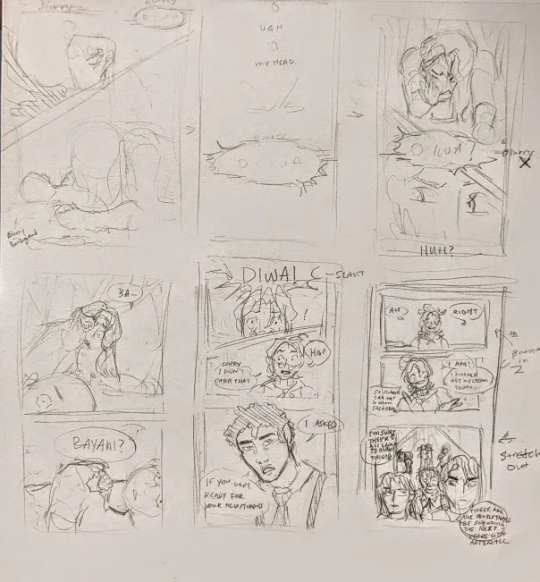

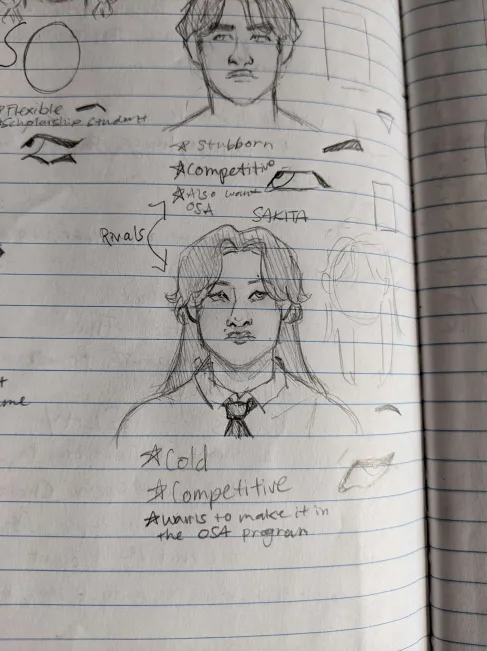


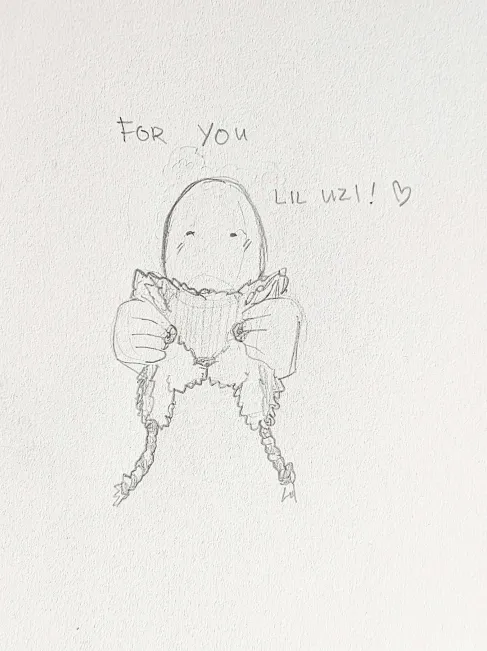

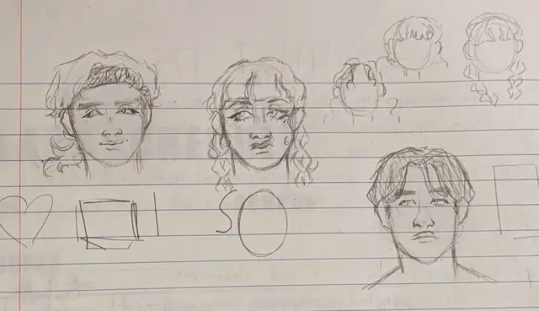
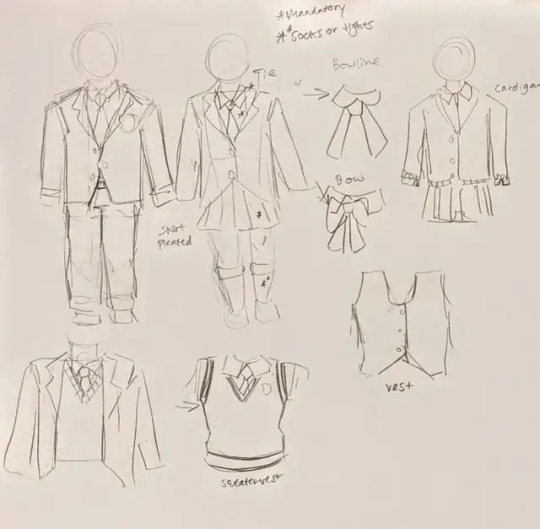

Concept Sketches from as far back as January. Many of the interactions was me trying to get a feel for the students before I realized I needed to VASTLY downsize my goals for my komik.
0 notes
Text
ARTIST STATEMENT
First of all, I wanted to thank everyone for the support given to me to even start this project. My partner who let me call and complain to them about line weight or fingers being the bane of my existence, my professor who did her best to reign me in from biting off more than I could chew, my kasamas who let me ask them questions about schooling in the Philippines, thank you to everyone who listened or offered a suggestion. Thank you to the library for letting me check out an odd number of books, heaps at a time (and telling me that it's cool if I returned one late because its due date wouldn't change from the same day I checked it out.)
It went through many more revisions than I anticipated and had to place this project on pause a few times while life happened around me, but I finally have my bits and pieces that I'm really proud of putting out into the world! Obviously, I wish that I was able to complete the entire piece but sometimes the message you want to imbue into the world through art has to be on pause while you use your physical body to put the work in.
What made you want to make a komik?
I wanted to make a komik because I think that the visual medium of storytelling is so interesting since unlike oral storytelling or prose, the words aren't the only important element. Poses, lighting, color, detail vs lack of detail, and brush choices, are all incredibly important in tone and what an illustrator wants to convey. It was also an important medium to me based on the message of my story which puts images and words in a hard tension with each other. A picture can mean a million different things based on the text captioned underneath it. But when that caption, or those words are used to paint a unreliable narrative, it's important to wonder why and examine to what end.
What aspects of the class did you take inspiration from/where did you use your research?
Each section was inspired and based off of research I had done about the medium I was exploring. For example, with the newspaper, I took a lot of inspiration from how the news right now use certain words in order to paint the narrative that best serves a certain political idea. For example, the adultification of people of color, usually black children, in order to dehumanize them and garner less sympathy. Studies have been done by USC and Georgetown University about the negative impact that it has on young children, particularly young black girl's mental health. It is also important to note that while these intuitions have studies on the adultification bias, they also actively ignore the adultification bias that is currently affecting Palestinian children who are being murdered by Israeli soldiers.
However, I also heavily researched newspapers during Duterte's presidency in the Philippines during his war on drugs and the extrajudicial killings that took place. Language in the media was very important as is shown in the documentary about Maria Ressa: A Thousand Cuts. This documentary not only helped with the newpaper angle that I was interested in, but also the online small reporting blog that is called Snapport in the komik--after Rappler in real life. There is a very political conversation surrounding the usage of language a mainly visual based medium. When words are repressed or censored, can an image do the work on its own?
As for the final section, the Zine section, I took the most inspiration from Bamboo Girl and Call Out Queen. Along with looking into other Filipino zines from the Philippine Zine Collection. Since they tend to be the most DIY and freeform, I decided to really have fun with format and layout.
What conversations did you want to engage with?
I wanted to talk to a sort of demonization power that the media has and how it is so easy to use it to affect the social consciousness. I've thought about this a lot since learning about the Philippines under Martial Law. Because the Marcos not only had control of the narrative, mainly through cultural/media presence, but also through being the ones actively rewriting the history books. However, on the other end, how social media (which hasn't been regulated to the point of news outlets) allows for these stories to be heard and told.
I also wanted to look at the power of images versus words. In the komik, the first page is words over-powering a small image. The words are targeted and biased solely based on opinion. But as the story progresses, it's clear to see how the beginning narrative ripples through the community. How people the farthest away from the scene, mainly due to class or privilege, feel educated enough to speak up on it due to reading the news--without considering the bias the news might have toward affirming ideas of a lower class to the upper class. (This is something that has been prevalent all throughout the history of news, to the point that the first printed photo in a US newspaper was on March 4th, 1880 in the Daily Graphic, and the image was that of a shanty town. Giving the upper class something to gawk over at how people could live in such a way.)
It was important to me that the ending scene and beginning scene were the ones I focused on. I wanted to begin with words, dictating how you should feel about the blurred image of violence which is used more for shock value than important context, and ending with an image of coming together, of community and support, of love.
What was one of your biggest challenges?
Probably the most expected answer, time. It was consistently running against me, especially since I felt I kept spending the most time researching and revising rather than actually drawing. This ended up really kicking my butt, but also forcing me to pick the most important images and feelings I wanted my audience to come away from my piece with. It made me take this ginormous story which more than likely could've gotten away with me and made me distill it into its most saturated moments.
What did you fall short of?
There was so much more that I wanted to do and explore with formatting in conventional and unconventional ways that I'm not sure got across due to the small number of pages. However, I made sure to be 100% proud of the pages I produced, so I believe that's the silver lining.
0 notes
Text
MASTER POST
Artist Statement
My Process Post
Extras X
The Finished Pieces
1 note
·
View note
